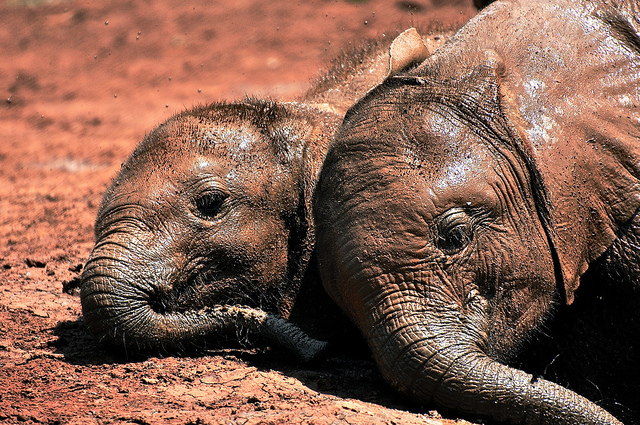- About
- Topics
- Story
- In-Depth
- Picks
- Opinion
- News
- Donate
- Signup for our newsletterOur Editors' Best Picks.Send
Read, Debate: Engage.
| September 24, 2022 | |
|---|---|
| topic: | Innovation |
| tags: | #Artificial intelligence, #wildlife, #conservation, #Africa, #mass extinction |
| located: | Zambia, Democratic Republic of the Congo, Cambodia |
| by: | Bob Koigi |
As biodiversity faces unprecedented decline, which is attributed to human activity and the effects of climate change, many conservationists are turning to emerging technologies for solutions. In some cases - the results are remarkable.
Traditional wildlife monitoring technologies have been time-consuming, costly, exhausting and prone to error. Automated cameras, for instance, which conservationists have long relied on to capture wildlife, produced images of animals that then had to be identified manually. Sifting through millions of pictures could take months, or even years, to classify. And with ongoing poaching and other threats like drought, such techniques have proven ineffective.
Yet loss of wildlife continues unabated, with species population sizes having plummeted by over two thirds on average in less than 50 years. And, research indicates that the COVID-19 pandemic has exacerbated the situation. In Africa, for example, more than half of protected areas had to pause anti-poaching operations, which placed wildlife at increased risk.
Emerging technologies like artificial intelligence (AI) have been credited with saving endangered species, taming poaching, boosting wildlife research and assisting in understanding animal behaviours.
"Although no singular technology can solve the current global ecological crisis, devices such as camera traps, acoustic sensors, drones, biologgers and satellites, as well as increasingly powerful genomic and artificial intelligence applications, hold the potential to empower conservationists to better understand and manage the socioecological systems in which they work," notes a 2021 report titled The State of Conservation Technology by Wild Labs, a community involved in technology conservation.
Generally, AI has been somewhat of a magic bullet - guiding computers how to complete tasks that humans would otherwise take along time to finish. The computer is programmed to receive data, interpret the patterns in it, and then classify, predict and modify consequent input.
From saving endangered birds in the Amazon to protecting elephants and rhinos in southern African parks from poachers by giving rangers evidence-based information, artificial intelligence has redefined modern-day conservation.
Kafue National Park, one of the largest sanctuaries in Zambia, spans 22,400 square kilometers and hosts over 6,000 African savanna elephants. Bordering the park is Lake Itezhi-Tezhi. With such expansive geography, taming poaching and illegal fishing becomes a challenge.
In a milestone for conservation efforts, Game Rangers International’s Connected Conservation Initiative and Department of National Parks and Wildlife in Zambia have embraced artificial intelligence to build a virtual fence around Lake Itezhi-Tezhi with infrared thermal cameras installed to capture the movement of all boats entering the park around the clock. As a result, poaching for ivory has decreased by close to 50 percent.
While initially the cameras were manually monitored by the park rangers, the introduction of AI has ensured that any boat entering the park is automatically detected. This reduced human surveillance needs and boosted efficiency.
The Congo Basin, the second largest rainforest globally, is home to some of the most endangered species. To boost conservation in the forest, Appsilon, a data science company has been working since 2020 with the University of Stirling in Scotland and Gabon's National Parks Agency to develop an AI image classification tool meant for monitoring of biodiversity.
Dubbed Mbaza, the algorithm has the ability to classify 3,000 images every hour with 96 percent accuracy. In its first year of being rolled out, Mbaza analysed 50,000 images that were collected from 200 camera traps placed within 7,000 square kilometers of the forest. The tool operates both online and offline, which makes it ideal for use in areas with no internet.
"Our wildlife and biodiversity by extension are at unprecedented danger," said Arthur Muturi, a data scientist. "Climate change, for example, one of the biggest threats, is affecting wildlife’s habitation, source of food and interaction with humans to an extent of extinction.
"AI is offering timely interventions on how to reverse the current situation while contributing to key Sustainable Development Goals, including protecting, restoring and promoting sustainable use of terrestrial ecosystems while halting and reversing biodiversity loss,"
And as poaching the world over reaches epidemic proportions, PAWS (Protection Assistance for Wildlife Securities), an AI tool, is equipping rangers with up-to-date information on areas where poaching is likely to occur. This is done thanks to a mapping of hotspots, tracking and data collection on poaching trends.
Field reports indicate that patrols guided by this AI have registered better animal-per kilometer detection rates compared to traditional patrols.
One month after it was introduced in Cambodia, the tool assisted rangers to find 42 chainsaws, 1000 snares, 24 motorbikes and a truck.
As technology evolves and threats to wildlife grow, experts are calling on increased collaboration, information sharing and ethical use of technological innovations to safeguard the future of animal species and the planet.
"COVID has been an eye opener on the urgent need to conserve the global biodiversity and why public private partnership will help us achieve that," added Muturi. "We need to embrace sustainable conservation efforts that are ahead of poachers and emerging threats like climate change while ensuring that technology is at the heart of these efforts.
"However, we should also advocate for responsible use of emerging technologies by having strong oversight systems and processes, which guarantee these technologies do not harm wildlife and humans."
Image by Sutirta Budiman.
By copying the embed code below, you agree to adhere to our republishing guidelines.

